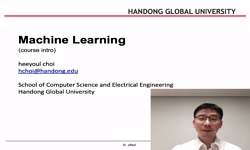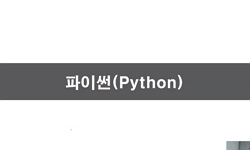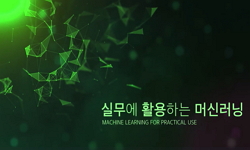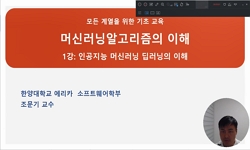Customer engagement is regarded as a performance indicator of social media marketing, and previous studies have reported that the characteristics of content to increase customer engagement. However, the topic of content has not been sufficiently studi...
http://chineseinput.net/에서 pinyin(병음)방식으로 중국어를 변환할 수 있습니다.
변환된 중국어를 복사하여 사용하시면 됩니다.
- 中文 을 입력하시려면 zhongwen을 입력하시고 space를누르시면됩니다.
- 北京 을 입력하시려면 beijing을 입력하시고 space를 누르시면 됩니다.
https://www.riss.kr/link?id=A107274535
- 저자
- 발행기관
- 학술지명
- 권호사항
-
발행연도
2021
-
작성언어
Korean
- 주제어
-
KDC
324
-
등재정보
KCI우수등재
-
자료형태
학술저널
- 발행기관 URL
-
수록면
115-142(28쪽)
-
KCI 피인용횟수
2
- DOI식별코드
- 제공처
- 소장기관
-
0
상세조회 -
0
다운로드
부가정보
다국어 초록 (Multilingual Abstract)
Customer engagement is regarded as a performance indicator of social media marketing, and previous studies have reported that the characteristics of content to increase customer engagement. However, the topic of content has not been sufficiently studied. This study analyzes the relationship between the topic of social media content and customer engagement and suggests an analysis procedure that can apply a machine learning model, a key tool for recent digital transformation. For empirical analysis, 154,705 social media data of 51 global brands were collected, and content topics were classified using a topic modeling method. And the relationship between content topic and customer engagement was analyzed using zero-inflated negative binomial regression analysis and machine learning model. As a result of the analysis, contents of 51 brands were classified into 18 contents topics, and there was a difference in the impact on customer engagement according to the topic. In addition, using a machine learning model, it was possible to predict the customer engagement performance of the content with an accuracy of about 90%. This study contributed to the marketing literature by analyzing the relationship between social media content topics and customer engagement through machine learning methodology.
참고문헌 (Reference)
1 Chen, T., "Xgboost:A scalable tree boosting system" 785-794, 2016
2 Berger, J., "What makes online content viral?" 49 (49): 192-205, 2012
3 Araujo, T., "What Motivates Consumers To Re-Tweet Brand Content? : The impact of information, emotion, and traceability on pass-along behavior" 55 (55): 284-295, 2015
4 Okazaki, S., "Using Twitter to engage with customers : a data mining approach" 25 (25): 416-434, 2015
5 Aleti, T., "Tweeting with the stars : Automated text analysis of the effect of celebrity social media communications on consumer word of mouth" 48 (48): 17-32, 2019
6 Guo, T., "The effect of information disclosure on industry payments to physicians"
7 Lessmann, S., "Targeting customers for profit: An ensemble learning framework to support marketing decision-making" 2019
8 Kumar, V., "Synergistic effects of social media and traditional marketing on brand sales : capturing the timevarying effects" 45 (45): 268-288, 2017
9 Friedman, J. H., "Stochastic gradient boosting" 38 (38): 367-378, 2002
10 Samuel, A. L., "Some studies in machine learning using the game of checkers" 3 (3): 210-229, 1959
1 Chen, T., "Xgboost:A scalable tree boosting system" 785-794, 2016
2 Berger, J., "What makes online content viral?" 49 (49): 192-205, 2012
3 Araujo, T., "What Motivates Consumers To Re-Tweet Brand Content? : The impact of information, emotion, and traceability on pass-along behavior" 55 (55): 284-295, 2015
4 Okazaki, S., "Using Twitter to engage with customers : a data mining approach" 25 (25): 416-434, 2015
5 Aleti, T., "Tweeting with the stars : Automated text analysis of the effect of celebrity social media communications on consumer word of mouth" 48 (48): 17-32, 2019
6 Guo, T., "The effect of information disclosure on industry payments to physicians"
7 Lessmann, S., "Targeting customers for profit: An ensemble learning framework to support marketing decision-making" 2019
8 Kumar, V., "Synergistic effects of social media and traditional marketing on brand sales : capturing the timevarying effects" 45 (45): 268-288, 2017
9 Friedman, J. H., "Stochastic gradient boosting" 38 (38): 367-378, 2002
10 Samuel, A. L., "Some studies in machine learning using the game of checkers" 3 (3): 210-229, 1959
11 Büschken, J., "Sentencebased text analysis for customer reviews" 35 (35): 953-975, 2016
12 Vermeer, S. A., "Seeing the wood for the trees : How machine learning can help firms in identifying relevant electronic word-ofmouth in social media" 36 (36): 492-508, 2019
13 Kanuri, V. K., "Scheduling content on social media : Theory, evidence, and application" 82 (82): 89-108, 2018
14 Chawla, N. V., "SMOTE : synthetic minority over-sampling technique" 16 : 321-357, 2002
15 Breiman, L., "Random forests" 45 (45): 5-32, 2001
16 Azagba, S., "Psychosocial working conditions and the utilization of health care services" 11 (11): 1-7, 2011
17 Anandarajan, M., "Probabilistic topic models, In Practical Text Analytics" Springer 117-130, 2019
18 Cui, D., "Prediction in marketing using the support vector machine" 24 (24): 595-615, 2005
19 De Vries, L., "Popularity of brand posts on brand fan pages : An investigation of the effects of social media marketing" 26 (26): 83-91, 2012
20 Zhang, Y., "Modeling the role of message content and influencers in social media rebroadcasting" 34 (34): 100-119, 2017
21 Jacobs, B. J., "Model-based purchase predictions for large assortments" 35 (35): 389-404, 2016
22 Ling, X., "Model ensemble for click prediction in bing search ads" 689-698, 2017
23 Tirunillai, S., "Mining marketing meaning from online chatter : Strategic brand analysis of big data using latent dirichlet allocation" 51 (51): 463-479, 2014
24 Blei, D. M., "Latent dirichlet allocation" 3 : 993-1022, 2003
25 Liu, X., "Large-scale cross-category analysis of consumer review content on sales conversion leveraging deep learning" 56 (56): 918-943, 2019
26 Li, Y., "Is a picture worth a thousand words? An empirical study of image content and social media engagement" 57 (57): 1-19, 2020
27 Muntinga, D. G., "Introducing COBRAs : Exploring motivations for brand-related social media use" 30 (30): 13-46, 2011
28 Toubia, O., "Intrinsic vs. image-related utility in social media : Why do people contribute content to twitter?" 32 (32): 368-392, 2013
29 Göçken, M., "Integrating metaheuristics and artificial neural networks for improved stock price prediction" 44 : 320-331, 2016
30 Batra, R., "Integrating marketing communications : New findings, new lessons, and new ideas" 80 (80): 122-145, 2016
31 Malhotra, A., "How to get your messages retweeted" 53 (53): 61-66, 2012
32 Swani, K., "Evaluating Facebook brand content popularity for service versus goods offerings" 79 : 123-133, 2017
33 Heath, C., "Emotional selection in memes : the case of urban legends" 81 (81): 1028-1041, 2001
34 Greene, W. H., "Econometric analysis" Pearson Education India 2003
35 Ballestar, M. T., "Customer segmentation in e-commerce : Applications to the cashback business model" 88 : 407-414, 2018
36 Pansari, A., "Customer engagement : the construct, antecedents, and consequences" 45 (45): 294-311, 2017
37 Brodie, R. J, "Customer engagement : Conceptual domain, fundamental propositions, and implications for research" 14 (14): 252-271, 2011
38 Trusov, M., "Crumbs of the cookie : User profiling in customer-base analysis and behavioral targeting" 35 (35): 405-426, 2016
39 Tsai, C. F., "Credit rating by hybrid machine learning techniques" 10 (10): 374-380, 2010
40 Huang, D., "Consumer preference elicitation of complex products using fuzzy support vector machine active learning" 35 (35): 445-464, 2016
41 Jalali, N. Y., "Composing tweets to increase retweets" 36 (36): 647-668, 2019
42 Hartmann, J., "Comparing automated text classification methods" 36 (36): 20-38, 2019
43 Hoffman, D. L., "Can you measure the ROI of your social media marketing?" 52 (52): 41-49, 2010
44 Seetharaman, P., "Business models shifts : Impact of Covid-19" 54 : 102173-, 2020
45 Breiman, L., "Bagging predictors" 24 (24): 123-140, 1996
46 Chakraborty, I., "Attribute Sentiment Scoring with Online Text Reviews: Accounting for Language Structure and Attribute Self-Selection" 2019
47 Cruz, J. A., "Applications of machine learning in cancer prediction and prognosis" 2 : 117693510600200030-, 2006
동일학술지(권/호) 다른 논문
-
- 한국경영학회
- Ahyun Kim(김아현)
- 2021
- KCI우수등재
-
데이터 기반의 디자인 씽킹을 이용한 서비스 개선 전략에 대한 연구: 홈쇼핑의 T 커머스 사례 분석을 중심으로
- 한국경영학회
- ChangHyun Lee(이창현)
- 2021
- KCI우수등재
-
스피드 팩토리 로봇카페 서비스 개발의 전략적 요인에 관한 연구: 무인화 단계에 따른 평가
- 한국경영학회
- Taejin Kim(김태진)
- 2021
- KCI우수등재
-
디지털 성숙도 진단모형 개발과 적용을 통한 디지털 트랜스포메이션 준비성에 관한 연구: 석유화학산업 S회사의 사례를 중심으로
- 한국경영학회
- Myung-Sook Heo(허명숙)
- 2021
- KCI우수등재
분석정보
인용정보 인용지수 설명보기
학술지 이력
| 연월일 | 이력구분 | 이력상세 | 등재구분 |
|---|---|---|---|
| 2022 | 평가예정 | 계속평가 신청대상 (등재유지) | |
| 2017-01-01 | 평가 | 우수등재학술지 선정 (계속평가) | |
| 2013-01-01 | 평가 | 등재학술지 유지 (등재유지) |  |
| 2010-01-01 | 평가 | 등재학술지 유지 (등재유지) |  |
| 2008-01-01 | 평가 | 등재 1차 FAIL (등재유지) |  |
| 2006-01-01 | 평가 | 등재학술지 유지 (등재유지) |  |
| 2004-01-01 | 평가 | 등재학술지 유지 (등재유지) |  |
| 2001-07-01 | 평가 | 등재학술지 선정 (등재후보2차) |  |
| 1999-01-01 | 평가 | 등재후보학술지 선정 (신규평가) |  |
학술지 인용정보
| 기준연도 | WOS-KCI 통합IF(2년) | KCIF(2년) | KCIF(3년) |
|---|---|---|---|
| 2016 | 1.45 | 1.45 | 1.48 |
| KCIF(4년) | KCIF(5년) | 중심성지수(3년) | 즉시성지수 |
| 1.64 | 1.69 | 2.793 | 0.2 |





 DBpia
DBpia







